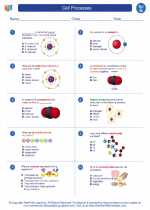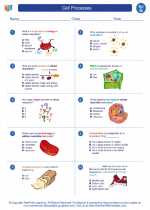Capillaries
Capillaries are the smallest blood vessels in the body, with a diameter just slightly larger than that of a single red blood cell. They connect the smallest arteries (arterioles) to the smallest veins (venules) and play a crucial role in the exchange of gases, nutrients, and waste products between the blood and the tissues.
Structure of Capillaries
Capillaries are composed of a single layer of endothelial cells, which are surrounded by a basement membrane. This thin structure allows for the efficient exchange of substances between the blood and the surrounding tissues. Capillaries are also incredibly numerous, with an estimated 10 billion in the human body.
Functions of Capillaries
Capillaries serve several important functions in the body:
- Gas Exchange: Capillaries facilitate the exchange of oxygen and carbon dioxide between the blood and the tissues.
- Nutrient Exchange: They allow for the transfer of nutrients such as glucose and amino acids from the blood to the tissues.
- Waste Product Removal: Capillaries enable the removal of metabolic waste products, such as carbon dioxide and urea, from the tissues into the blood for eventual excretion.
- Fluid Exchange: They are involved in the regulation of fluid balance and the exchange of water and electrolytes between the blood and the tissues.
Capillary Beds
Capillaries are organized into networks known as capillary beds, which are the sites of exchange between the blood and the surrounding tissues. These capillary beds are strategically located to ensure efficient delivery of oxygen and nutrients and removal of waste products.
Regulation of Capillary Blood Flow
The diameter of capillaries can be regulated by precapillary sphincters, which are bands of smooth muscle at the arteriole end of the capillary. These sphincters can constrict or dilate, controlling blood flow into the capillary bed and regulating the exchange of substances.
Study Guide for Capillaries
- Define capillaries and describe their structure.
- Explain the functions of capillaries in the body.
- Discuss the role of capillary beds in the exchange of substances between the blood and the tissues.
- Describe the regulation of capillary blood flow by precapillary sphincters.
- Compare and contrast the structure and function of capillaries with other blood vessels, such as arteries and veins.
◂Science Worksheets and Study Guides Seventh Grade. Cell Processes

 Activity Lesson
Activity Lesson
 Worksheet/Answer key
Worksheet/Answer key
 Worksheet/Answer key
Worksheet/Answer key
 Worksheet/Answer key
Worksheet/Answer key
 Worksheet/Answer key
Worksheet/Answer key
 Vocabulary/Answer key
Vocabulary/Answer key
 Vocabulary/Answer key
Vocabulary/Answer key
 Vocabulary/Answer key
Vocabulary/Answer key
 Vocabulary/Answer key
Vocabulary/Answer key
 Vocabulary/Answer key
Vocabulary/Answer key
 Vocabulary/Answer key
Vocabulary/Answer key
 Vocabulary/Answer key
Vocabulary/Answer key
